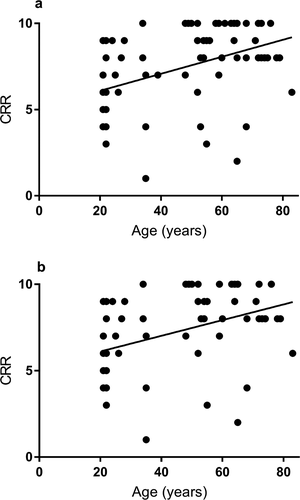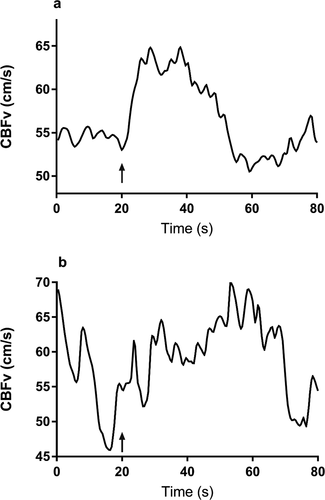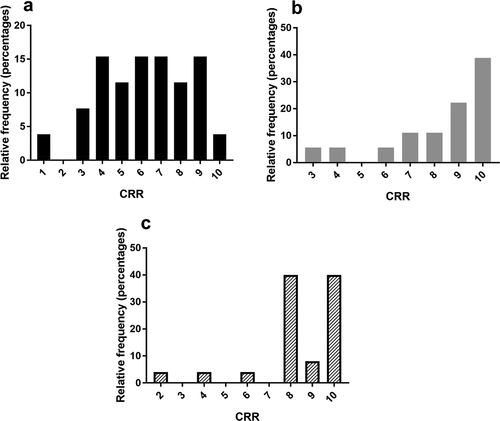Figures & data
Table 1. Demographics of the baseline, task-activated, and normotensive only datasets. Data are median [range], mean (standard deviation), or number (percentage). Significance testing by Chi-square (nominal data) or Mann–Whitney U (continuous data) between task-activated and normotensive only data-sets. Significant where p < 0.05
Table 2. Multiple linear regression of age and blood pressure (BP) on cerebral blood flow velocity (CBFv) in the non-dominant and dominant hemispheres. CI = confidence interval. Statistically significant where p < 0.05
Table 3. Correlation (Spearman) between cumulative response rate (CRR) and cognitive test score by age group. Cognitive test scores are Median [inter-quartile range]
Table 4. Median cumulative response rate (CRR) and [inter-quartile range] by age group. Significance testing across groups by Kruskal-Wallis
Figure 1. Scatter diagram between age (years) with cumulative response rate (CRR), in the whole cohort (a), and normotensive group only (b). Line of best fit from linear regression



